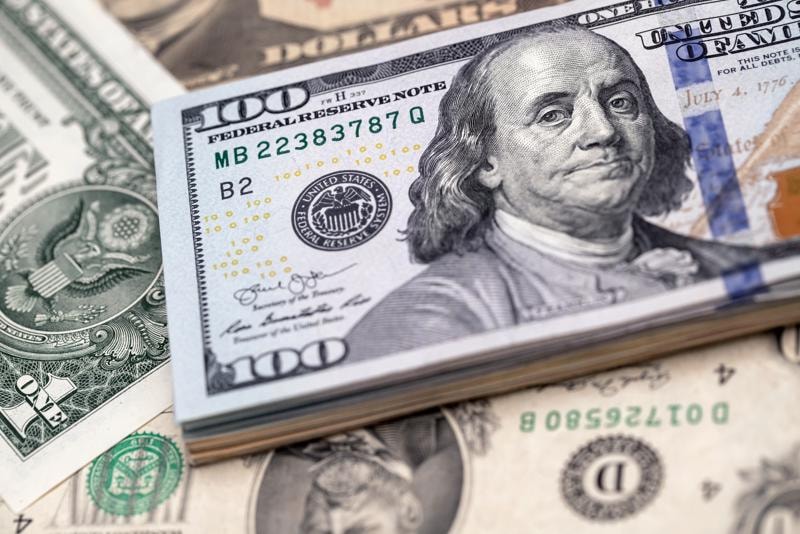World currency exchange rates
The US dollar continued to recover in the last trading session, thanks to some buying after being oversold last month, amid investors' optimism about tariff agreements between the US and its trading partners.
Trading volume was thinner than usual, as many international markets were closed on May 2 due to the Labor Day holiday.
Meanwhile, the yen fell as the Bank of Japan (BOJ) cut its growth forecast due to US tariffs and kept interest rates unchanged. The yen fell to a four-week low against the greenback, rising 1.7% to 145.52 yen, heading for its biggest one-day gain since November 2024.
Against the euro, the yen also fell to a four-month low, with the common currency up 1.4% against the yen to 164.29 yen. The euro is on track for its biggest daily gain against the yen in two months.
The BOJ's decision to keep interest rates unchanged was widely expected. The BOJ now expects core inflation to reach its 2% target in the second half of 2026 or later, a year later than its previous forecast in January.

U.S. Treasury Secretary Scott Bessent and White House economic adviser Kevin Hassett expressed hope on May 1 for progress in easing trade tensions. Hassett told CNBC that there have been discussions around tariffs and that China’s easing of tariffs on some U.S. goods last week was a positive sign.
President Donald Trump on April 30 shared positive signs in trade deals with India, South Korea and Japan, along with a great opportunity to reach a deal with China.
The euro fell to a three-week low against the greenback in afternoon trade, closing down 0.4% at $1.1286. The pound also fell 0.4% to $1.3284.
Against the Swiss franc, the dollar rose 0.6% to 0.8311 francs.
Investors are now looking ahead to the US non- farm payrolls (NFP) report tomorrow (May 3) for a clearer view on when the US Federal Reserve (Fed) will cut interest rates again. Wall Street economists forecast about 130,000 new jobs were created last month, compared to 228,000 seen in February.
New data showed initial U.S. jobless claims jumped to a two-month high in the latest week. A separate report showed U.S. manufacturing continued to contract in April, while tariffs on imported goods strained supply chains.
The Institute for Supply Management's (ISM) manufacturing PMI fell to a five-month low of 48.7, slightly better than expected. A PMI reading below 50 indicates contraction. Economists polled by Reuters had forecast a drop to 48.
Domestic foreign exchange rates
In the domestic market, at the beginning of the trading session on May 2, the State Bank announced that the central exchange rate of the Vietnamese Dong against the USD remained unchanged, currently at 23,956 VND.
* The reference exchange rate at the State Bank's transaction office for buying and selling remains unchanged, currently at: 23,759 VND - 26,153 VND.
USD exchange rates at some commercial banks are as follows:

* The EUR exchange rate at the State Bank's buying and selling exchange remains unchanged, currently at: 27,033 VND - 29,879 VND.
EUR exchange rates at some commercial banks are as follows:

* The Japanese Yen exchange rate at the State Bank's exchange office for buying and selling remains unchanged, currently at: 167 VND - 184 VND.
The YEN exchange rate at some commercial banks is as follows:

Source: https://baodaknong.vn/ty-gia-ngoai-te-hom-nay-2-5-dong-usd-tiep-da-tang-251262.html


































































































Comment (0)